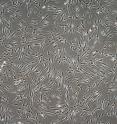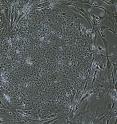OHSU scientists unlock first step toward gene therapy treatment of mitochondrial disease
Related images
(click to enlarge)
A study led by Shoukhrat Mitalipov, Ph.D., and Hong Ma, M.D., Ph.D., at the Center for Embryonic Cell and Gene Therapy at Oregon Health & Science University and the Oregon National Primate Research Center has revealed the first critical step in developing novel gene and stem cell therapy treatments for patients with mitochondrial disease. This breakthrough, published online today in the journal Nature, sets the stage for replacing diseased tissue in patients and opens the door to a world of regenerative medicine where doctors are able to treat human diseases that are currently incurable.
The scientists successfully used mitochondrial replacement to create an embryonic stem cell with healthy mitochondria from a patient's skin cell containing mitochondrial DNA mutations. These mutations can cause a vast range of fatal or severely debilitating diseases, including diabetes, deafness, eye disorders, gastrointestinal disorders, heart disease, dementia, and several other neurological diseases. In the United States, 1,000 to 4,000 children are born with mitochondrial DNA disease each year. There are no meaningful treatments or cures.
In May 2013, Mitalipov was the first in the world to demonstrate the successful use of somatic cell nuclear transfer to produce human embryonic stem cells from a research subject's skin cell. That breakthrough followed a six-year chain of discoveries that included his 2007 work demonstrating the nuclear transfer method to create embryonic stem cells from a nonhuman primate. This chain included what may be a new technique to help families prevent inherited mitochondrial disease in future generations.
"To families with a loved one born with a mitochondrial disease waiting for a cure, today we can say that a cure is on the horizon. Over the past several years, we have been working to generate stem cells for use in combating disease. This critical first step toward treating these diseases using gene therapy will put us on the path to curing them," said Mitalipov. "And, unlike unmatched tissue or organ donations, combined gene and cell therapy will allow us to create the patients' own healthy tissue that will not be rejected by their bodies."
"This is an important advancement by Drs. Mitalipov and Ma in the quest to develop treatments and cures for those affected by mitochondrial disease," said Philip Yeske, Ph.D., Science and Alliance Officer for the United Mitochondrial Disease Foundation. "Mitochondrial replacement holds great therapeutic potential, and the patient community looks forward to further progress on the path toward clinical applications."
This latest breakthrough overcomes a persistent stumbling block to developing stem cell therapies for human diseases. To conduct this research, the scientists collected skin cells from research subjects, mostly children and a few middle-aged men, with mitochondrial DNA mutations. Next they recovered the nucleus from the skin cells and paired them with healthy donor cytoplasm from an egg. Cytoplasm is the watery material surrounding a cell's nucleus that contains the mitochondrial DNA. The mitochondria have the specific task of generating energy for the cell. Through this technique, scientists created an embryonic stem cell with healthy mitochondria.
Scientists aspire to use this technique to replace diseased tissue in the future by removing one cell, correcting the mutations, multiplying the cells and reinserting the genetically correct cells into the patient to replace diseased tissue. The nuclear transfer technique is more precise than classic gene therapy. Rather than inserting synthetic genes into patients delivered by viruses, nuclear transfer uses donated healthy mitochondrial genes.
"Regenerative technologies offer the prospect of transformative solutions to correct tissue defects in disease. Current care for mitochondrial diseases is limited to addressing patient symptoms, but falls short from providing a definitive cure," said Andre Terzic, M.D., Ph.D., Michael S. and Mary Sue Shannon Family Director, Center for Regenerative Medicine at Mayo Clinic. "Resetting or replacing disease-corrupted mitochondria to produce healthy patient derived stem cells paves the way towards targeting the root cause of the problem. The present study exemplifies how synergy of multidisciplinary teams advances the field."
"Induced pluripotent stem cell and somatic cell nuclear transfer are two complementary cell reprogramming strategies that hold great potential for patient specific cell replacement therapies," said Jun Wu, Ph.D., senior postdoctoral researcher with Izpisua Belmonte lab at the Salk Institute for Biological Studies and study co-author. "Both technologies have been successfully harnessed in our study for eliminating mutant mitochondrial DNAs, offering an important step forward toward therapeutic interventions for patients with mitochondrial diseases."
Source: Oregon Health & Science University
Articles on the same topic
- Stem cells move one step closer to cure for genetic diseasesThu, 16 Jul 2015, 1:36:04 UTC
Other sources
- Cloning technique that fixes mitochondrial genes could treat genetic diseasesfrom CBC: Technology & ScienceThu, 16 Jul 2015, 14:00:06 UTC
- First step toward gene therapy treatment of mitochondrial disease unlocked by scientistsfrom Science DailyThu, 16 Jul 2015, 1:30:09 UTC
- Stem cells move one step closer to cure for genetic diseasesfrom Science DailyWed, 15 Jul 2015, 21:00:17 UTC
- Stem Cells Move One Step Closer to Cure for Genetic Diseasesfrom Newswise - ScinewsWed, 15 Jul 2015, 19:30:12 UTC
- Stem cell treatments for mitochondrial disease may be possiblefrom LA Times - ScienceWed, 15 Jul 2015, 18:00:33 UTC
- Scientists use 'therapeutic cloning' to fix mitochondrial genesfrom Reuters:ScienceWed, 15 Jul 2015, 17:50:07 UTC


